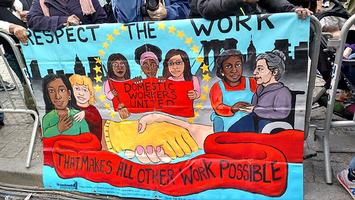
America is mired in a crisis of unprecedented scope and depth. The disruption of the pandemic is draining for all of us, but for many, its consequences are dire.
For the millions of people who’ve had little or no work for pay for as long as six months, life is immeasurably stressed. Prospects for jobs seem nil. Their savings, if they were lucky to have them, were depleted long ago. In this “other America,” to borrow the title of Michael Harrington’s 1962 expose of poverty as our national shame, they confront intolerable burdens.
The recovery and prosperity of the stock market is generating headlines. But the market reflects the prospects of the already wealthy; it is by no means the story of the real economy. Drilling down into new data offers a deeper look into the livelihoods of 2.5 million domestic workers. They are the home care workers assisting our elders and other family members with health conditions or disabilities, nannies who tend our kids, and the cleaners for our apartments and homes.
Read the rest of this piece at Working-Class Perspectives.
Angelina Del Rio Drake is Chief Operating Officer at PHI, a Job Quality Fellow at The Aspen Institute, and a former home care worker. Mark G. Popovich is Director of the Good Companies/Good Jobs Initiative within the Aspen Institute Economic Opportunities Program. He worked in childcare and lower-wage food service, maintenance, and other jobs early in his career.
Photo credit: The All-Nite Images via Flickr, under CC 2.0 License.












